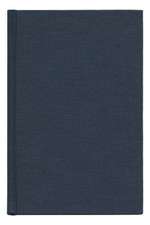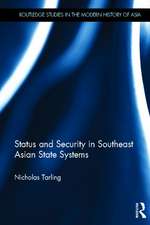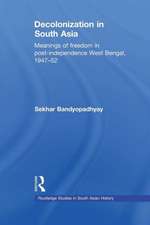Is China Unstable?: Assessing the Factors
Autor David L. Shambaughen Limba Engleză Hardback – 30 apr 2000
Preț: 1000.27 lei
Preț vechi: 1219.84 lei
-18% Nou
Puncte Express: 1500
Preț estimativ în valută:
191.40€ • 199.84$ • 158.41£
191.40€ • 199.84$ • 158.41£
Carte tipărită la comandă
Livrare economică 05-19 aprilie
Preluare comenzi: 021 569.72.76
Specificații
ISBN-13: 9780765605726
ISBN-10: 0765605724
Pagini: 152
Dimensiuni: 152 x 229 x 19 mm
Greutate: 0.45 kg
Ediția:1
Editura: Taylor & Francis
Colecția Routledge
Locul publicării:Oxford, United Kingdom
ISBN-10: 0765605724
Pagini: 152
Dimensiuni: 152 x 229 x 19 mm
Greutate: 0.45 kg
Ediția:1
Editura: Taylor & Francis
Colecția Routledge
Locul publicării:Oxford, United Kingdom
Cuprins
Chapter 1 Introduction: A Typology for Stability and Instability in China, Steven F. Jackson; Chapter 2 How Do We Know If China Is Unstable?, H. Lyman Miller; Chapter 3 The Chinese Leadership: Cracks in the Façade?, David Shambaugh; Chapter 4 Political Instability at the Middle and Lower Levels: Signs of a Decaying CCP, Corruption, and Political Dissent, Bruce J. Dickson; Chapter 5 Sources of Macroeconomic Instability in China, Nicholas R. Lardy; Chapter 6 How Stable Is China? An Economic Perspective, Pieter Bottelier; Chapter 7 ::, Dorothy J. Solinger; Chapter 8 Instability in Rural China, Thomas P. Bernstein; Chapter 9 The Potential for Instability Among Alienated Intellectuals and Students in Post-Mao China, Merle Goldman; Chapter 10 The Potential for Instability in Minority Regions, June Teufel Dreyer; Chapter 11 Chinese Social Trends: Stability or Chaos?, Martin King Whyte;
Descriere
A discussion of the potential for instability in China from political, economic and historical perspectives. It considers elite and local politics, micro- and macro-economics, urban and rural conditions, attitudes among intellectuals, and minority areas.























